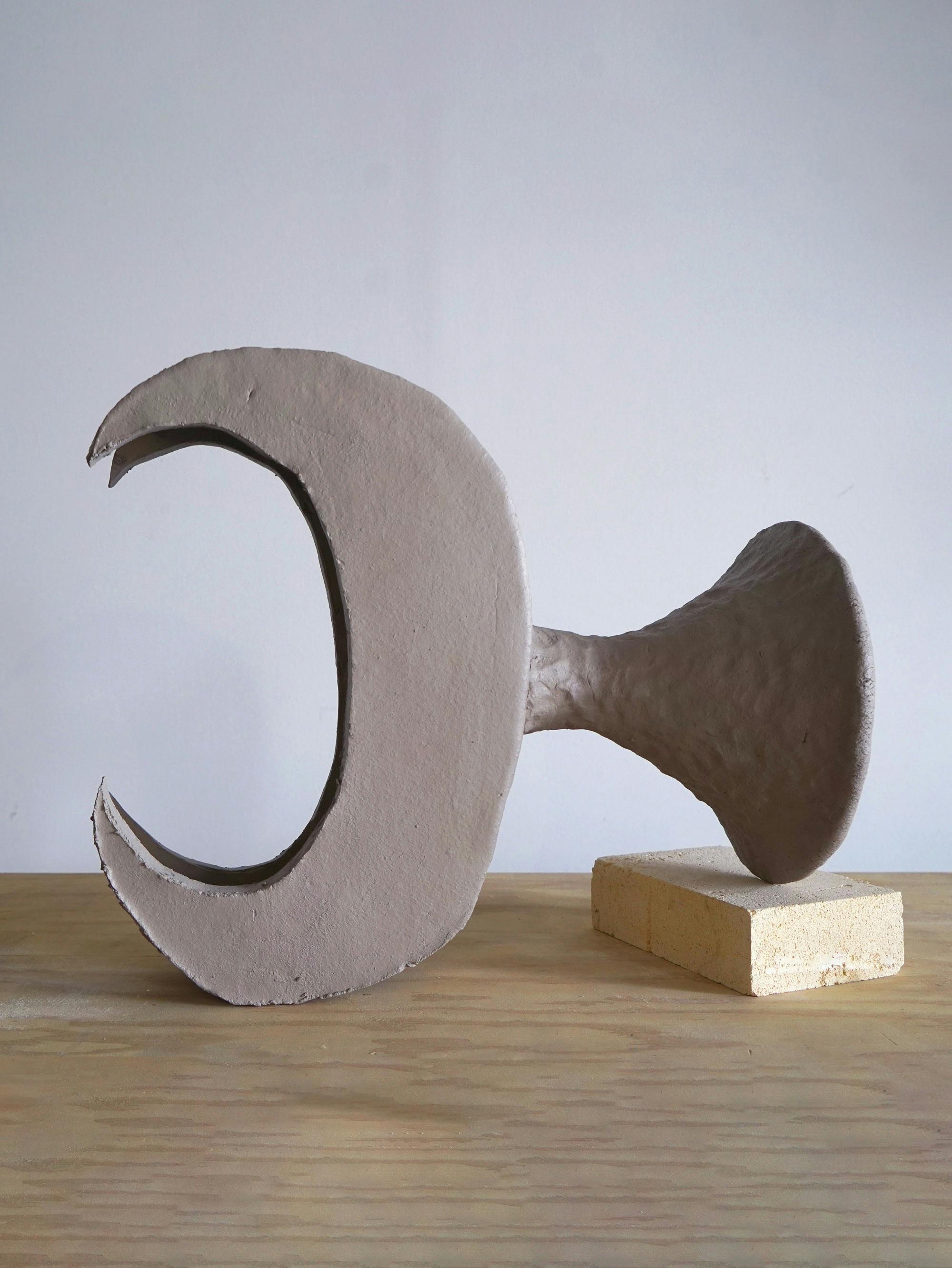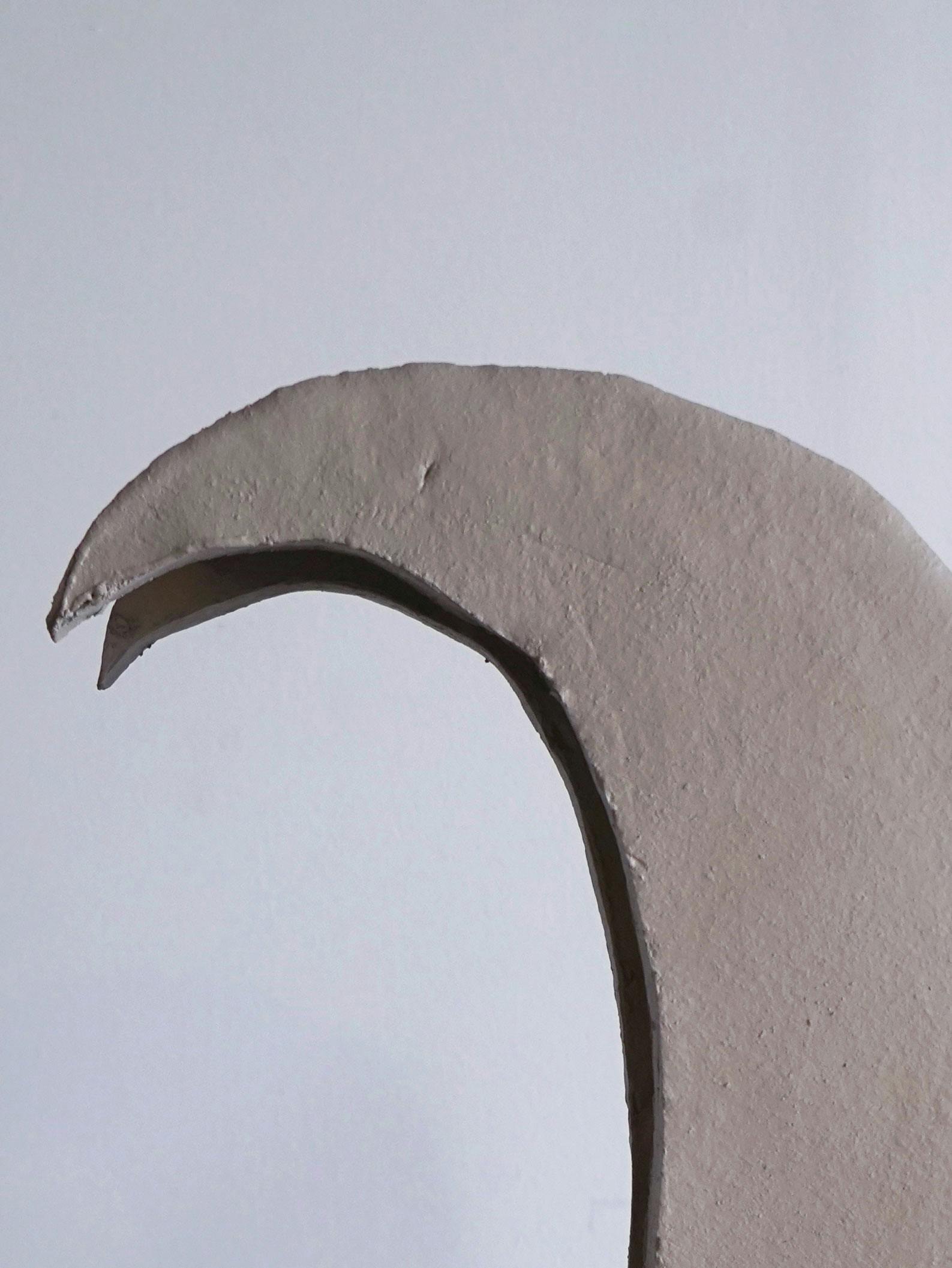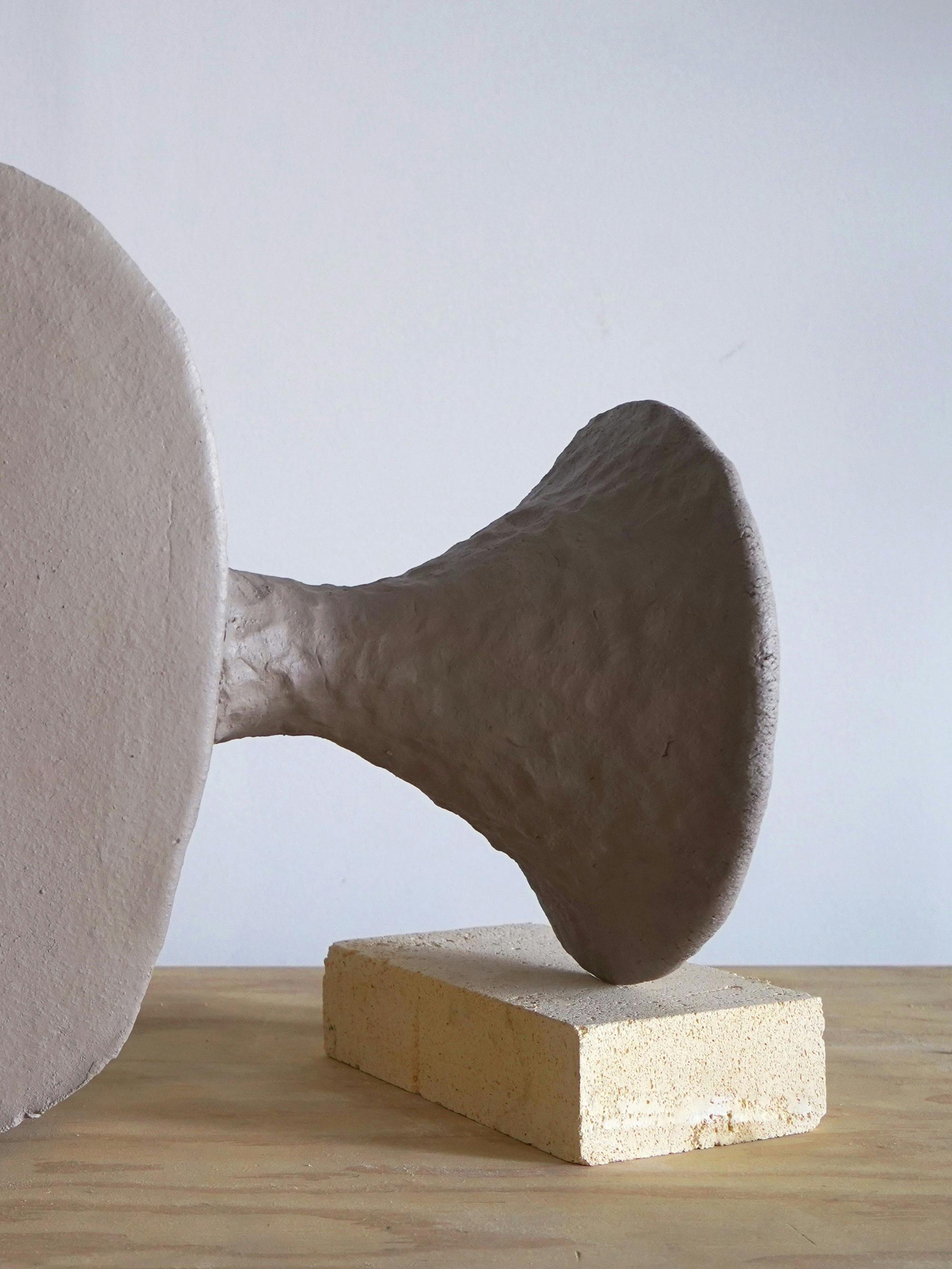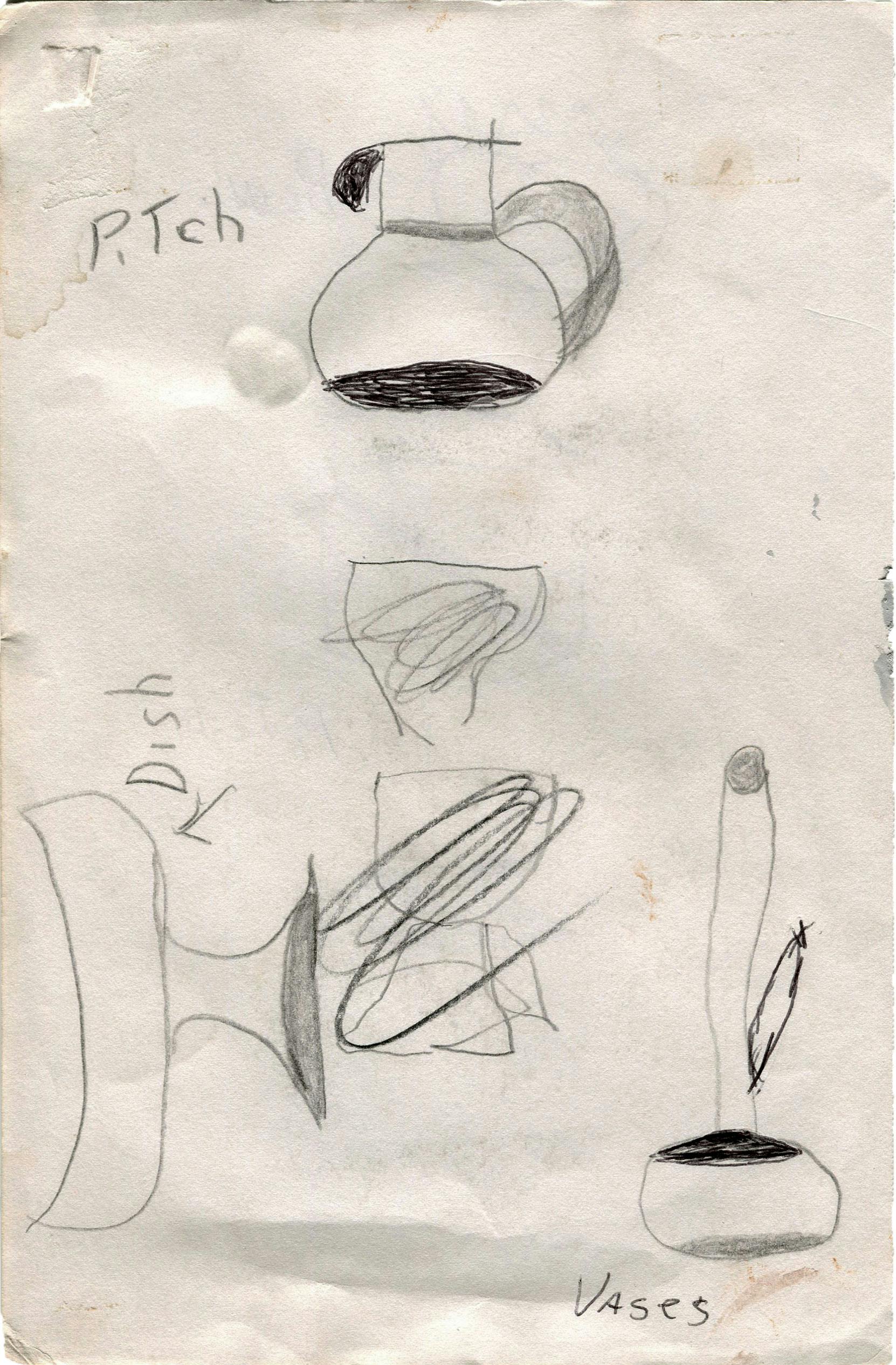Crescent
Trevor King
- Ceramic, soft brick
- 2022
- 16" x 20" x 14"
"This piece is part of 'Notions,' a series of ceramic sculptures inspired by drawings my grandfather made for me between 2011 and 2016 based on valuable objects from the Antiques Roadshow. Each piece in this series is a carefully constructed depiction of one of these sketches, modeled and painted to look like an unfinished sculpture.
In the process of making this series, I’ve become interested in proportion and orientation. Often, my grandfather would rotate the page that he was sketching on so it’s not totally clear which side is meant to be up. This piece is made as it’s drawn, with the traditional bottom of the vessel placed on its side, and the main body of this chalice-like shape resembling a waxing or waning moon.
In this piece, and throughout the whole series, you can see my fingerprints left on the surface of the clay. The many different textures of the hand-building process are left unrefined and it is easy to study how the object was constructed. When I teach, I often encourage my students to refine the canvas texture that is transferred onto clay when using a slab ruler. However, in this instance, I’ve decided to celebrate that quick and unrefined texture, leaving it on the surface of the moon."
- Trevor King
The fourth image shows the original inspiration for this piece. Drawing by Roy Mellott. This purchase includes a signed and numbered copy of Notions, Trevor's monograph about this series.
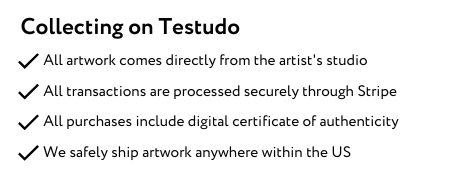
Please login to purchase.
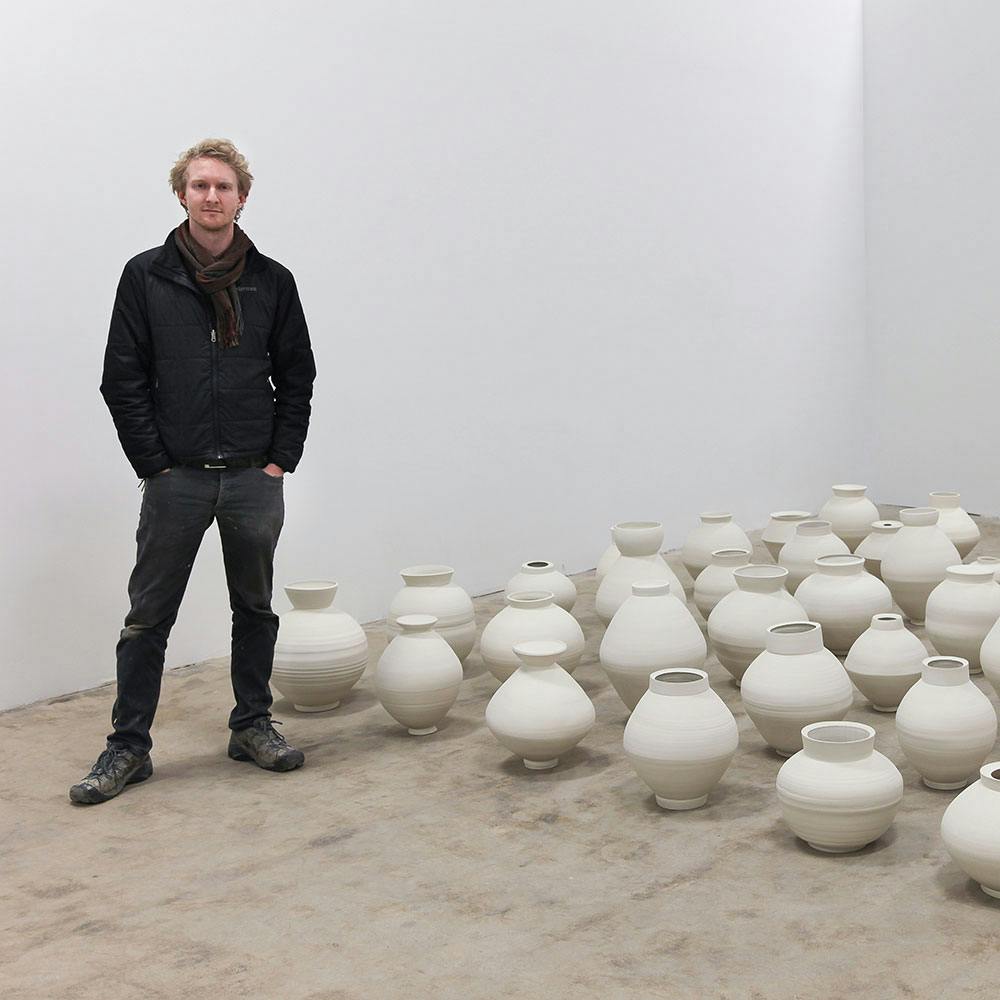
Trevor King
Lives and works in New York, NY
Mining the archives of both a historical and personal past, Trevor King explores how images and language can be translated into sculptural forms. Working primarily in ceramics, King concerns himself with these transformational qualities of sculpture, and often presents his work alongside archival videos, interviews, and even sketches by his grandfather. His resultant sculptures have a rough, raw quality with the process of their making intrinsically recorded on their surfaces as if challenging the very notion of utility and beauty. King ultimately reveals the relationships and interconnectedness between objects and history.
Heavily influenced by his childhood growing up in Western Pennsylvania, King initially turned to pottery because of its unique nonhierarchical place in art history—pottery bridging a divide between use and aesthetic pleasure. Throughout his work are hints of a post-industrial landscape, material awareness, as well as an interest in the democratization of art. King recognized how ceramics, both as vessels and art objects, are vital to our cultural history and used by art historians to add texture to our knowledge of the past. Thus, King approaches his own work with a keen sense of how these objects hold memories, capture the passing time, and specificity of place. King seeks to reveal the interrelations between objects and history.
